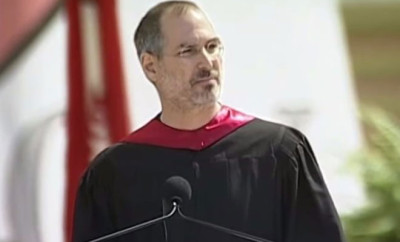
Seeking the Peak
Mountain climbers seek the peak. They climb to get to the top and to conquer the mountain. So do top athletes and Olympiads compete as they seek to set world-class records in their sports. They seek the peak by breaking records, setting new standards, raising the bar as to what is humanly possible. So do top business leaders and entrepreneurs as they create new businesses, innovate the next generation models, and articulate new visions that make life more fulfilling. And, in fact, we all do.
Peak Seeking as a Human Instinct
Seeking the peak is actually built into human nature. It is a biological drive that’s just as instinctual as our driving need for food, water, shelter, safety and security, love and affection, a positive self-regard, and self-actualization. These five needs are the levels of needs that psychologist Abraham Maslow discovered and used to create his now classic list. In his time, his hierarchy of needs was an absolutely revolutionary shift. I say revolutionary because, at that time, nobody could explain the “higher” drives and needs of people and so psychologists and philosophers generally viewed them as epiphenomenonal, that is, not as real drives like hunger or sex.
This explains why Maslow’s Hierarchy of Innate Needs took the world of psychology, management, leadership, motivation, health care, education, organisational development, and many other fields by surprise and launched an entirely new focus on the bright-side of human nature. Maslow showed how our driving needs (our innate instinct-like urges, impulses, and motivating needs) are hierarchical in nature and that by nature we are “a wanting species” who are never satisfied. As soon as we gratify one need, another emerges.
The Revolutionary Pyramid
What was so revolutionary about the Hierarchy of Needs? Several things. First there was the connection and integration between all of the many, many, many things that people had identified as human needs. Maslow’s pyramid showed how there are levels of needs and that some are more prepotent (powerful, driving) than others and that with gratification, new needs emerge. This created a more holistic and systemic model of human motivation and personality.1 It also created a synergistic way of thinking about our needs without putting one at odds with another.
Which is most powerful, the drive for sex or power, self-esteem or love, safety or exploration, etc.? The Hierarchy showed that we have all of these and scores of other needs, and that they emerge in our awareness at different times depending on how effectively or ineffectively we learn to handle them. With accurate understanding of a need and an effective coping with that drive, we gratify the lower needs and move up to the next level. It is in this way that we all are innately wired to seek the peak.
And what is the peak? Undoubtedly, you know the hierarchy of needs: survival needs (food, water, shelter, sex, etc.), safety needs (security, protection, order, etc.), social needs (love and affection, bonding, community), self needs (self-regard, having a place in community, respect, recognition), and self-actualization needs (order, meaningfulness, love, contribution, justice, music, beauty, knowledge, excellence, exploration, etc.).
Maslow’s Pyramid Hierarchy of Innate Human Needs

The peak of the pyramid is where we are most fully human—where we begin to experience human life in its fullness. Below the self-actualization needs are all of the “lower needs,” the basic needs, the needs that we share with the higher and more intelligent animals. It is only at the level of self-actualization that we enter into the uniquely human way of life. This also is the place where we experience those special moments that bring this awareness to us, what Maslow called peak experiences.
In peak experiences, we rise above all of the striving to gratify the lower needs and doing things to get and to achieve. Here we live to be and to experience. Here time stops, here the world goes away, others go away, time vanishes, and we enter into a moment of engagement with whatever we are doing and are so present that we sometimes even have the sense that we are merging with the engagement. This subjective experience is a kind of mystical experience. This is what we are all made for— for the peak, for peak experiences, and for peak performances. We call this “the zone,” “flow,” and “the genius state.” When we live here, we are living a self-actualizing life. 2
Seeking the Peak Individually
On the personal level, we all are innately designed to seek the peak by becoming all that we can become. Maslow called this self-actualization. This refers to the never-ending drive within to keep growing and developing so that we find our inner potentials and make them real in our lives. Within our nature as human beings, we are forever discontent and restless. Unlike animals that don’t fret and worry about missing out on life’s fullness, we do. And no matter how high we rise in terms of our needs, once we enter into the peak and begin living there, we become even more restless. And this restlessness is both our highest nature and gift.
A healthy and growing human being is always learning, developing, and becoming more. School is never out; growth never comes to an end. There is always a sense of more. We want to create the best version of ourselves and experience the fullness of being fully alive. At this level we experience a different kind of motivation— expressive motivation, growth motivation, non-instrumental motivation, being motivation. Here we are not seeking to do anything as much as simply express our growth and being-ness. And the more we do so, the more we gratify the need and the more the need grows. The more meaning we discover and create, the more meaning we want. The more love we give, the more we have to give. And so it is with beauty, order, exploration, contribution, etc.
Seeking the Peak as an Employee
In a new book on his highly successful boutique hotel chain, Joire de Vivre Hospitality, CEO Chip Conley takes Maslow’s pyramid and applies it as a business model for organising how to think about and work with employees, customers, and investors. Part of his approach involved simplifying the pyramid from five distinctions to three distinctions. This gives what he calls the base or foundational needs, the middle, and the peak.
|
Maslow’s Pyramid
|
Conley’s re-interpretation of Maslow
|
|
|---|---|---|
|
Self-Actualization
|
Peak
|
Transformation
|
|
Self-Regard
Love and Affection |
Middle
|
Success
|
|
Safety and Security
Food, water, shelter, etc. |
The Base
|
Survival
|
Conley then makes the translation for employees. In his business model, what translates for survival, success, and transformation for the employee is money, recognition, and meaning. Money stands for the base requirement and includes the whole compensation package with all the perks and extras. But as Maslow and many others have noted, money can only provide so much motivation. While employees want to be decently compensated, they want more. At the middle level, they want recognition. These are some of the meta-needs and makes up some of the meta-pay that Maslow wrote about.
At the peak, employees want even more. They want their work to make a difference, to be part of something bigger than themselves, something that will last. They want meaning— they want inspiration. They want to work for a company that they can be proud of, a winning team that’s changing things or making a difference.
|
The Pyramid
|
Employee
|
|
|---|---|---|
|
Peak
|
Transformation Significance |
Meaning |
|
Middle
|
Success | Recognition |
|
The Base
|
Survival | Money |
Seeking the Peak for your Customers
There’s also a pyramid of needs for customers. When you are a customer, what do you want? And how many levels of wants do you have as a customer? Conley relates his three levels of Maslow’s pyramid to the customer’s expectations (base), desires (middle), and unrecognised needs (peak).
|
The Pyramid
|
Customer
|
|
|---|---|---|
|
Peak
|
Transformation Significance |
Unrecognised Needs – Enthusiastic Advocate |
|
Middle
|
Success | Desires/ Preferences — Commitment, Loyalty |
|
The Base
|
Survival | Expectations — Satisfaction |
At the base level, we have expectations about the products, services, information, and/or experiences that we purchase. We feel satisfied if our expectations are met and dissatisfied if our expectations are not met. This corresponds to the level of survival on the pyramid. We also have desires and preferences, things that we hope for and want, more than just what we expect and when we get these, we feel more than just satisfied, we feel a commitment to the company or business that provides such. We may even become a loyal customer.
To move to an even higher level requires the gratification of something that we need or want, but which we don’t even know that we need—our unrecognised needs. This may involve something that we have a vague sense of, yet it is unconscious or it may be something that we have no urge for because the gratification may not even exist yet. But once it is created, it speaks to us as an unrecognised need. Then when we get that, we experience it as a peak experience, as a fulfillment of who we are, who we can become, as something that contributes to us living a self-actualizing life. And when that happens, we become not merely a customer, not merely a loyal customer, but a highly enthusiastic advocate.
For the business person, the customer pyramid offers a business model for how to think about how we are responding to and gratifying the need levels of our customers. Are we only seeking “customer satisfaction?” Or have we taken care of that and have now moved up to creating “loyal customers?” Or, have we moved up to the peak and seeking the peak for our customers by the kind of deep unconscious listening and learning so that we create enthusiastic advocates? Obviously, the higher on the customer pyramid we work, the more loyal and committed the customer becomes—and the more successful the business.
Seeking the Peak for your Investors
There’s also a pyramid of needs for investors. So again we ask – When you are an investor, what do you want? And how many levels of wants do you have as an investor? Conley relates his three levels of Maslow’s pyramid to the investor’s goals and expectations (base), relationship and collaboration (middle), and legacy (peak).
|
The Pyramid
|
Investor
|
|
|---|---|---|
|
Peak
|
Transformation Significance |
Legacy – Pride of Ownership |
|
Middle
|
Success | Relationship Alignment – Confidence |
|
The Base
|
Survival | Transaction Alignment – Trust |
At the base level, when we invest we want a good return on investment (ROI). We want our money to make money and to make as much money as possible. Here our goals and expectations in the transaction regarding how much ROI is reasonable and realistic in the given market that we have chosen, and the people or company that we work with, leads to a sense of trust. As an investor however, we eventually have enough money and our concerns move up the pyramid, so that at the middle level our focus changes to concern the quality of the relationships we’re experiencing as investors. Sure we could make more money investing elsewhere, but does it fit our goals, values, interests, beliefs, etc.? And does the investing process put us around people that we enjoy being around, talking to, strategising with, or does it put us around people we don’t even like or care about? Here relationship alignment leads to confidence about our investments and lifestyle.
At the peak of investment, we are concerned not only about the ROI and the social connections and relationships that we get involved in, but also the legacy we are leaving. Now we feel that what we are investing in is meaningful and significant in terms of the legacy we are leaving.
Peak Seeking
Getting to the top, to the peak, describes the human way of being, a way of being that’s wired into us biologically. It is inevitable if we have sufficient good conditions environmentally and no cognitive distortions, misbeliefs, or myths interfering with our development. If we are not peaking, these are among the first interferences to sort for and address to unleash our potentials.
Developmentally, we are made to keep growing, learning, and developing as we move more and more to actualizing ourselves and our best potentials. This is true individually and it also remains true when we are employees, customers, or investors. And if this is part and parcel of human nature, then building organisations, businesses, groups, communities, even nations using this seeking to peak will enable us to build self-actualizing businesses and nations. And one tool or model that will assist us with this is the Hierarchy of Needs. As an organising structure, the Hierarchy enables us to profile the level of need or desire of people, as well as to understand their highest aspirational motivations.
This organising structure enables us to first focus on the base to create the foundation for activating the full potential of people as persons, as employees, as customers, as investors, etc. And simultaneously it invites and enables us to raise our expectations about their highest possibilities.
Author: L. Michael Hall, Ph.D. is a cognitive-behavioural psychologist who lives in Colorado and is now researching and modeling Maslow as he is launching a new human potential movement using the models of Neuro-Semantics and Meta-Coaching.
End Notes:
1. Maslow, Abraham. (1954/ 1970). Motivation and Personality.
2. Hall, L. Michael. (2007). Unleashed: A Guide to Your Ultimate Self-Actualization.
3. Conley, Chip. (2007). Peak: How Great Companies Get their Mojo from Maslow. San Francisco: Jossey-Bass, A Wiley Imprint.







